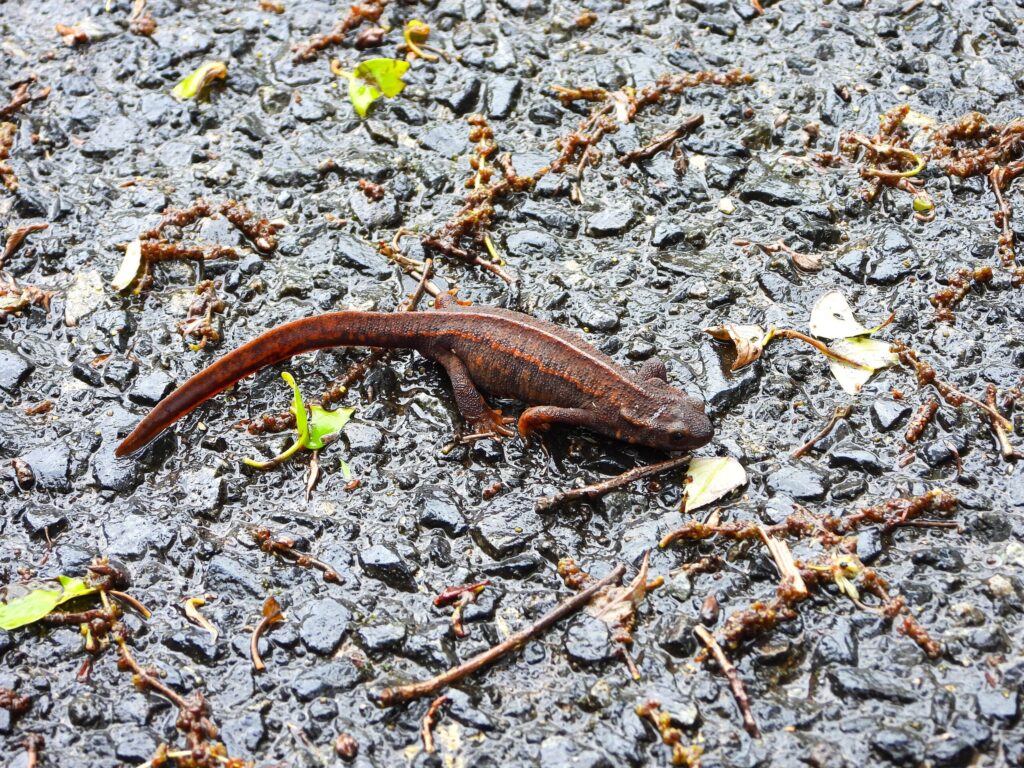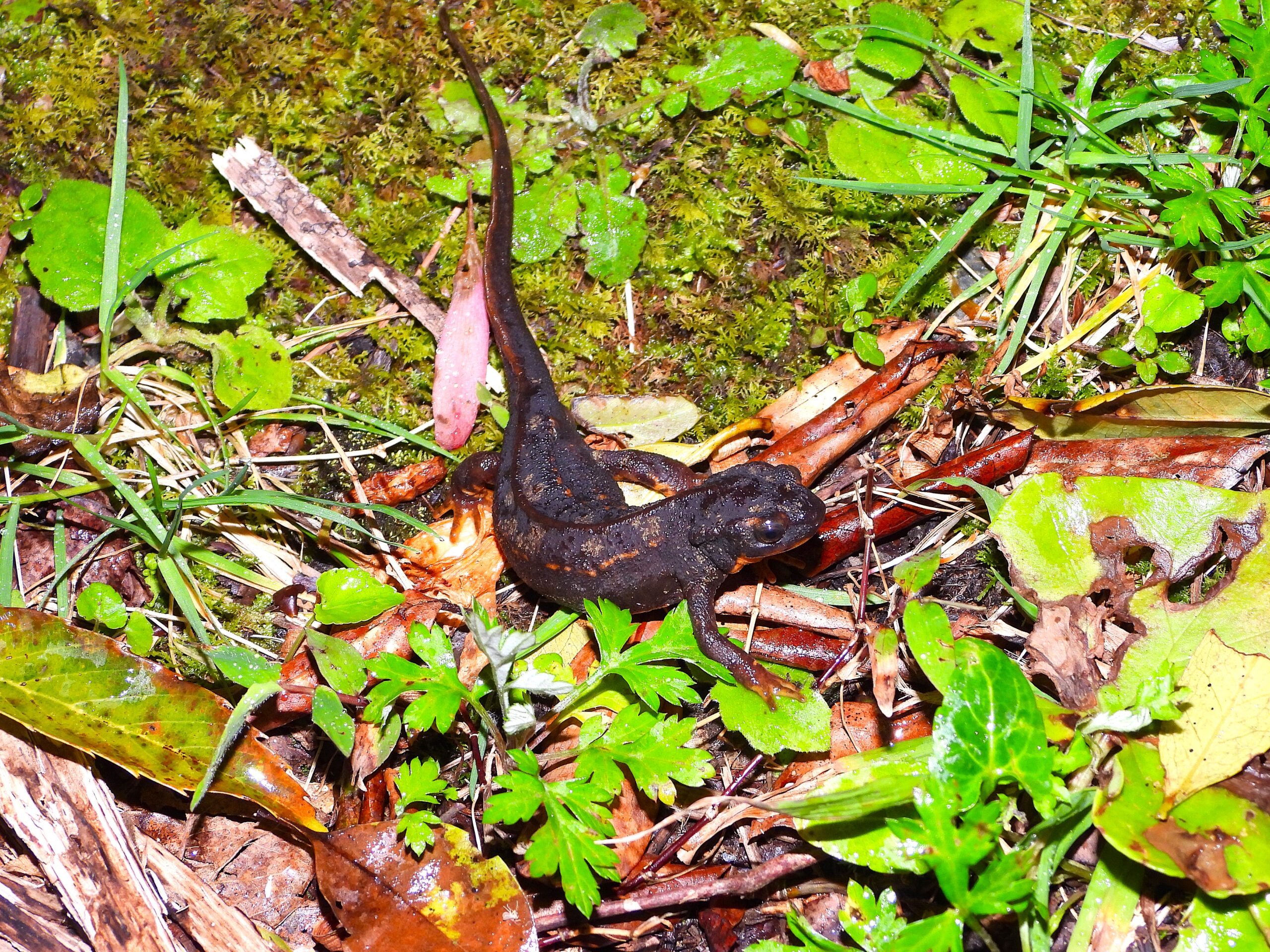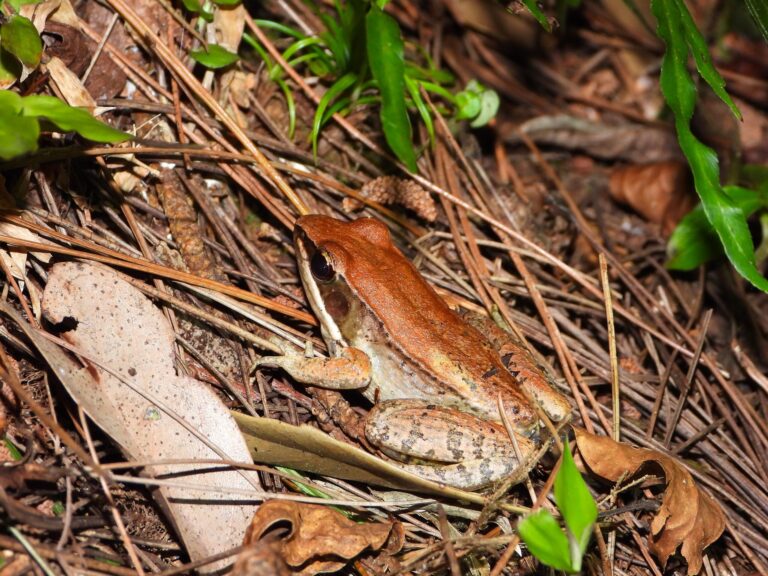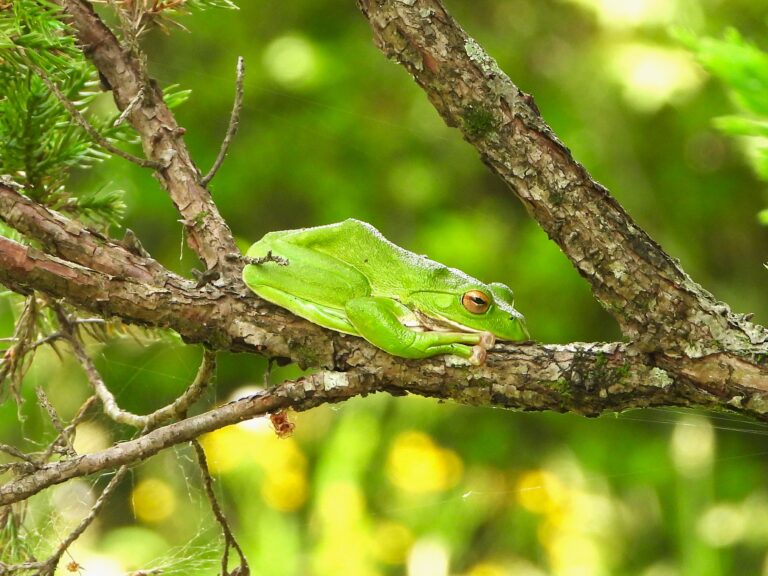Amami Sword-tail Newt (Cynops ensicauda ensicauda) – Wildlife of Japan
Introduction
The Amami Sword-tail Newt (Cynops ensicauda ensicauda) is the northern subspecies of the Sword-tail Newt (Cynops ensicauda), an island-endemic amphibian of Japan’s Ryukyu Archipelago.
Found only in the Amami Islands, this newt represents the northern population of the species, while the Okinawa Sword-tail Newt (C. e. popei) occupies the southern range.
Both are semi-aquatic members of the salamander family Salamandridae, showing distinctive coloration and island-specific adaptations.
Appearance
Adults reach 10–17 cm in total length, making this one of Japan’s largest newts. The dorsal surface is dark brown to nearly black, while the ventral side—including the tail—is bright orange or reddish-orange.
The tail is long, laterally compressed, and shaped like a blade, giving the species its common name “Sword-tail.”
The Amami subspecies typically lacks the golden dorsal spots seen in its Okinawan relative.
Habitat & Distribution
This subspecies occurs naturally only in the Amami Ōshima Island Group (Amami Ōshima, Kakeroma, Uke, and Yoro Islands) of Kagoshima Prefecture.
It inhabits slow-moving or stagnant freshwater environments such as forest ponds, small streams, and roadside ditches shaded by subtropical evergreen forest.
After rainfall, individuals often appear on forest paths and roads near these habitats.
Where to See in Japan
On Amami Ōshima, look for this species in shaded forest pools or quiet roadside ditches after rain.
As this is a protected species, observation should be done without touching or disturbing individuals or their habitat.
Behavior
The Amami Sword-tail Newt is nocturnal and semi-aquatic, spending the day hidden under leaf litter or stones near water.
During the breeding season, males perform tail-fanning courtship displays underwater.
The species secretes mild toxins through its skin, a defense shared with other Cynops newts.
Diet
Adults feed on small aquatic and terrestrial invertebrates such as worms, insect larvae, and snails.
Larvae consume aquatic microinvertebrates before metamorphosis.
Reproduction
Breeding occurs mainly from late winter through spring. Females lay single eggs attached to submerged plants or moss near water.
Larvae develop in water for several months before transforming into terrestrial juveniles.
Conservation
The Amami Sword-tail Newt is classified as Vulnerable due to habitat loss, road mortality, and illegal collection for the pet trade.
Conservation efforts focus on habitat protection, improved road design, and public awareness to reduce capture and roadkill.
Author’s Impression
In my experience, the Amami Sword-tail Newt can often be seen in surprising numbers along forest roads and in small puddles after rainfall.
If you quietly search the puddles beside forest paths at night or on a damp day, you may find several individuals resting or swimming.
Their abundance in such hidden places shows how rich and alive the forests of Amami remain—a reminder that even the smallest pools hold their own wildlife wonders.








